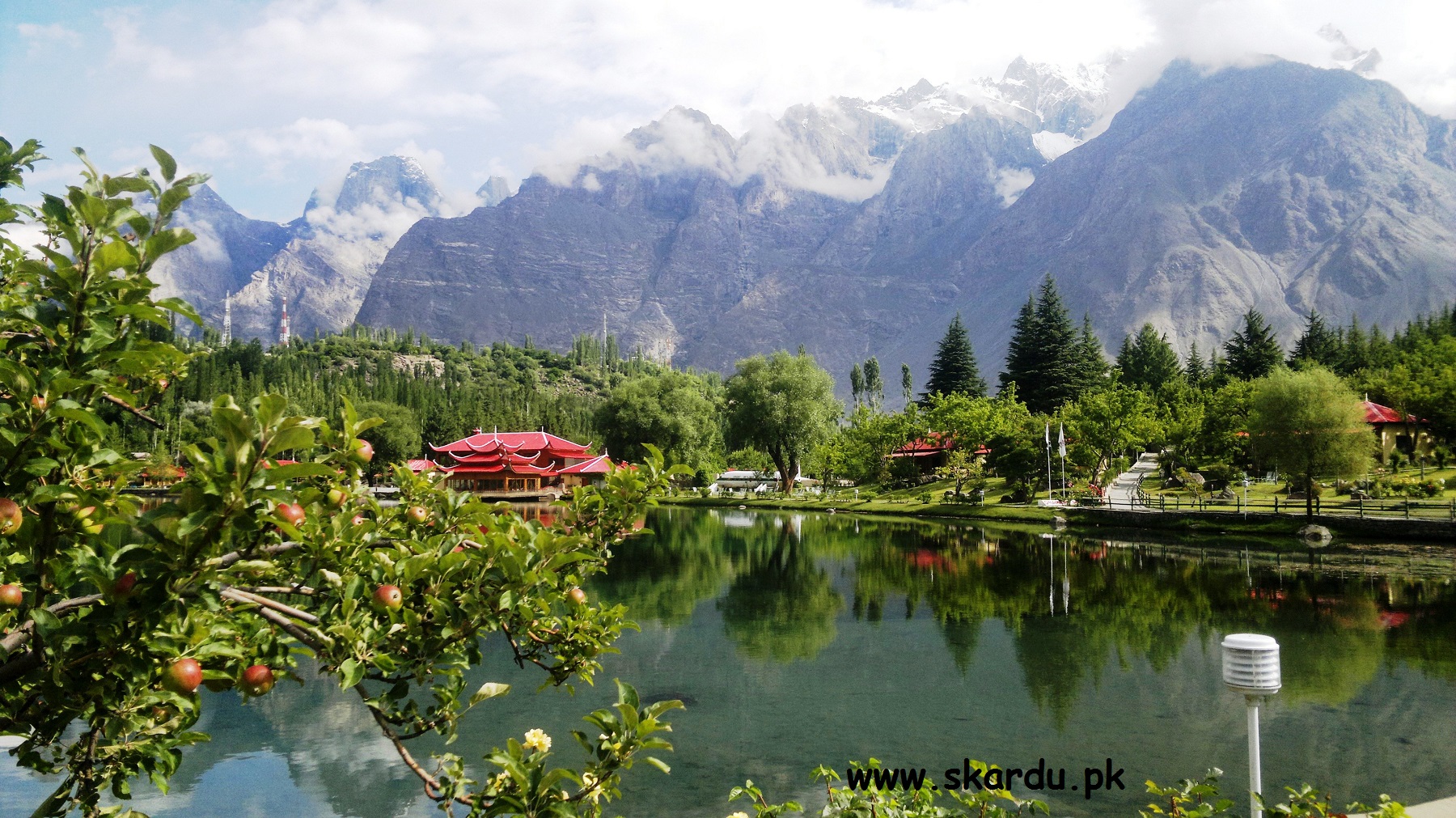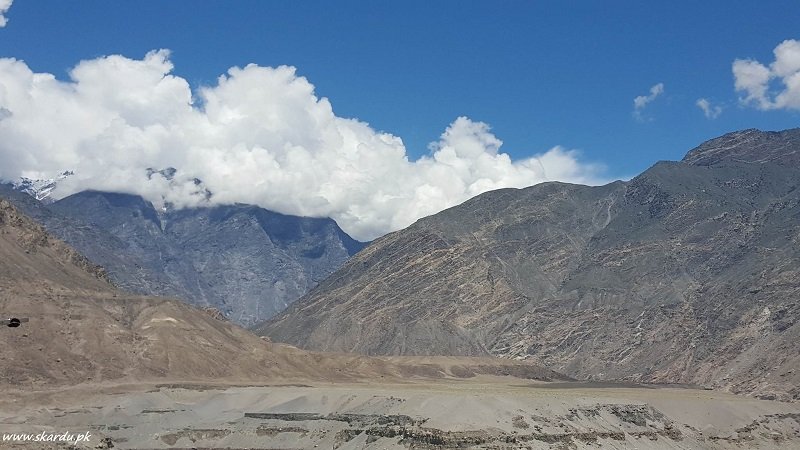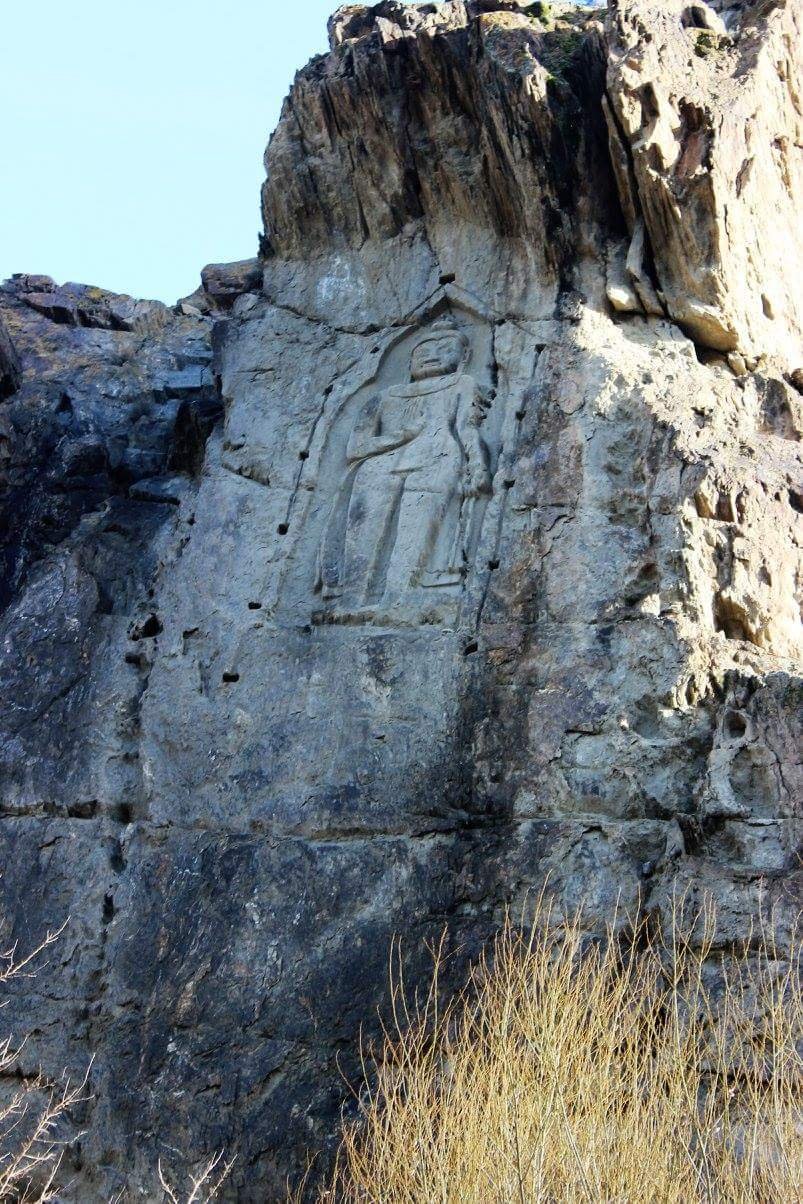Gilgit Baltistan (GB) is located in between the great mountain ranges of the world, the Himalayas, Karakoram, Pamir, and Hindukush. Geographically and historically GB is very important. GB covers an area of 72,971 sq km. It has been the centre of studies for geologists, earth scientists, anthropologists, environmentalists, and biologists. Gilgit Baltistan is bordered by China in the north, Indian-held Kashmir in the south, Afghanistan in the west, and Khyber Pakhtunkhwa province of Pakistan in the southwest. Gilgit Baltistan’s population is approximately 2 million.

Geography of Gilgit Baltistan
Nearly 50-55 million years ago two continental plates Indian plate and the Eurasian plate collided in the present-day Gilgit Baltistan region. This collision and tremendous pressure created the mountains of Karakoram and the Himalayas. These mountains are famous in the world for their height and geological importance. GB lies in between these mountains. There are thousands of glaciers in the Karakoram and the Himalayas Many rivers originate from these glaciers. The Indus river originates from the Himalayas. Shyok river originates from the Karakoram.
Administratively Gilgit Baltistan is divided into ten districts. The capital of Gilgit Baltistan is Gilgit city. Skardu is the largest city in terms of population and area. Chilas, Gahkuch, Shigar and Khaplu are some famous towns in GB. Gilgit Baltistan districts are Skardu, Gilgit, Diamer, Ghanche, Astore, Ghizer, Shigar, Kharmang, Nagar and Hunza.

Mountain Ranges
Gilgit Baltistan is home to the 5 highest mountains in the world. 5 out of 14 eight-thousanders peaks are located in GB. Majority of which lies in Concordia ‘the throne room of mountain God’.
- K2 8611 m
- Gasherbrum 1 8080m
- Broad Peak 8051m
- Nanga Parbat 8126m
- Gasherbrum 2 8035m
The Karakoram is home to the largest glaciers in the world outside the polar region. Famous glaciers are Siachen glacier, Baltoro glacier, Batura Glacier, Godwin Austin glacier and Biafo glacier. In addition, there are more than 2000 high-altitude lakes in GB. Some famous lakes are Satpara, Ataabad Lake, Khalit Lake, Naltar Lake, Shangrila Lake and Kachura Lake.
GB is also one of the largest Gemstone producing territories in the world. Here some of the rarest gemstones are found which include topaz, aquamarine, ruby, granite, sapphire, amethyst, blue and azure colour gemstones.
History of Gilgit Baltistan
Early Gilgit-Baltistan history can be traced from rock carvings that are painted on different rocks in GB. The famous rock carvings are located in Chilas on the site of the Diamer Bhasha dam. These rock arts tell us about the ancient history of Gilgit Baltistan. According to a survey, there are twenty-five thousand rock artists in Chilas. These paintings include animal paintings, signs, scripts, structures, and buildings. According to Professor Ahmed Hassan Dani, these rocks date back to 1000 BC. He writes that the names of kings and their history are written in the form of paintings on these rocks.

Ancient History
The ancient history of this region is mentioned in Faxian’s book. Faxian was a Chinese monk. He travelled from China to present-day Pakistan via the silk route to Gilgit Baltistan in search of Buddhist texts. He writes that ” Pololo is a country which is stretched from east in Tibet to west in Ghandhara (Swat ). The king of Pololo lives in Hosalo (Khaplu)”. From his book, many historians suggest that Khaplu was the capital of the Pololo country. Gilgit and Hunza were called Little Pololo while Baltistan and Ladakh were called greater Pololo. Moreover, Arab historians have also written this area as Bolore because Arabs can’t spell “p”. Therefore, some historians and nationalists use Boloristan and Balawaristan for Gilgit Baltistan.
In the 6th to 7th centuries Buddhism was practised here. The carved images of Buddha in Manthal village Skardu, Lamsa Shigar, Khaplu and Karga Gilgit are some of the monuments of Buddhism. Additionally, Buddhist prayers are written in Tibetan script on a rock with a carved image of Buddha at Manthal Skardu. During this period Tibetans of Lhasa ruled on GB. Although Baltis are ethnically Tibetan they were not part of the central Tibetan empire before that.
Medieval History
The medieval history of Gilgit Baltistan is written in different historical books like Tarikh e Hindustan, Tarikh e Farishta, Tuhfat ul Ahbaba, Tarikh e Jammu, Raaj Trangni, etc. Moreover, historical sites are some of the manifestations of the medieval age.
The arrival of Islam in Gilgit Baltistan
Islam was introduced here by different Sufi missionaries from central Asia, Kashmir and Iran. The famous Sufi preacher Syed Ali Hamadani a.k.a Ameer e Kabir Shah e Hamadan inclined people towards Sufi Islam. He came from Hamadan Iran to Baltistan and Kashmir via central Asia. He introduced Sufi Islam in Baltistan and Kashmir. Late on his disciples Syed Muhammad Noorbakhsh, Mir Shamsuddin Araki, Syed Mehmood and Mir Arif followed him and visited Baltistan. In the 15th century, a book was written by Muhammad Ali Kashmiri disciple of Mir Shamsuddin Araqi a Noorbakhshi Sufi.
Mir Shamsuddin Araki travelled from Srinagar to Skardu to propagate the Noorbakhshi Sufi order of Islam. One of his disciples wrote the book ” Tuhfat ul Ahbab”. This is the most authentic history of Baltistan and Kashmir. The writer has mentioned the names of the rulers of Skardu, Shigar and Khaplu. Maqpon Bukha was the ruler of Skardu and Yabgo Behram was the ruler of Khaplu at the time of the compilation of this book. Here is an English translation of Tohfatuíl-Ahbab. Maqpon Bukha as mentioned in this book constructed the Kharphocho fort in Skardu.
Read 5 Surprising facts about Gilgit Baltistan that may amaze you
States of Gilgit Baltistan
GB was ruled by many local rulers. Among them Maqpuns of Skardu is famous. In the 16th century AD, Maqpoun ruler Ali Sher Khan Anchan unified Gilgit Baltistan, Ladakh, Western Tibet, and Chitral. Ali Sher Khan Anchan had a friendly relationship with the Mughal empire. He brought Mughal music and arts to Baltistan. That’s why Mughal influence can be seen in Baltistan. He married a Mughal princess namely Gul Khatoon. A palace namely “Mondoq Khar” was constructed for a Mughal princess.
Gilgit Baltistan Culture and Languages
Gilgit Baltistan is a multi-ethnic and multi-lingual region. More than six different languages are spoken in GB. Gilgit Baltistan culture attracts a lot of tourists from across the world.
Aryan Languages
Shina language is primarily spoken in Diamer, Astore, Gilgit, Ghizer and Nagar. There are a small amount of Shina speakers in Skardu, Kharmang and Hunza too. Shina is a Dardic language which is Indo Arian language.
In Hunza Valley, a group of people speaks a language namely Domaki. While Wakhi is spoken in the upper parts of Hunza valley. It is an Indo-Aryan language. Khwar is a sister language of Shina. People of Chitral and the upper parts of Ghizer speak this language.
Burushaski language is spoken in Hunza Yasin and Nagar valley. Burushaski is an isolated language. That’s why it has no connection with any language in the world.
Tibetan Language
Balti language is spoken in Skardu, Shigar, Kharmang and Ghanche in the Baltistan division. Balti is a branch of the Tibetan language. Its sister language is Ladakhi. Balti is one of the classic Tibetan languages. The Tibetan language is spoken in Tibet, Nepal. Bhutan, Sikkim India, western provinces of China, and Ladakh. The Tibetan culture can be seen in arts, architecture and music in Baltistan that’s why Baltistan is also called Little Tibet.
Political Status of Gilgit Baltistan
Gilgit Baltistan got independence from Maharaja Jammu Kashmir on 1st November 1947. That’s why Gilgit Baltistan independence day is celebrated on 1st November. Gilgit Baltistan is now an administrative unit of Pakistan. Gilgit Baltistan’s capital is Gilgit city. GB is neither a province of Pakistan nor a state. It has a semi-provincial system of government with a local assembly namely the Gilgit Baltistan Legislative Assembly GBLA. GBLA has limited powers of legislation. Moreover, there is a council in Islamabad namely GB Council. The head of the GB council is the prime minister of Pakistan. The Government of Gilgit Baltistan is similar to the provincial government of other provinces of Pakistan, but it is not a constitutional province.
Gilgit-Baltistan Tourism
GB is the hub of tourism in Pakistan. Read 100 Places To Visit in Gilgit Baltistan Pictures and Videos
Skardu.pk is one of the leading authentic news and information platform focusing on adventure tourism, regional and world affairs.
